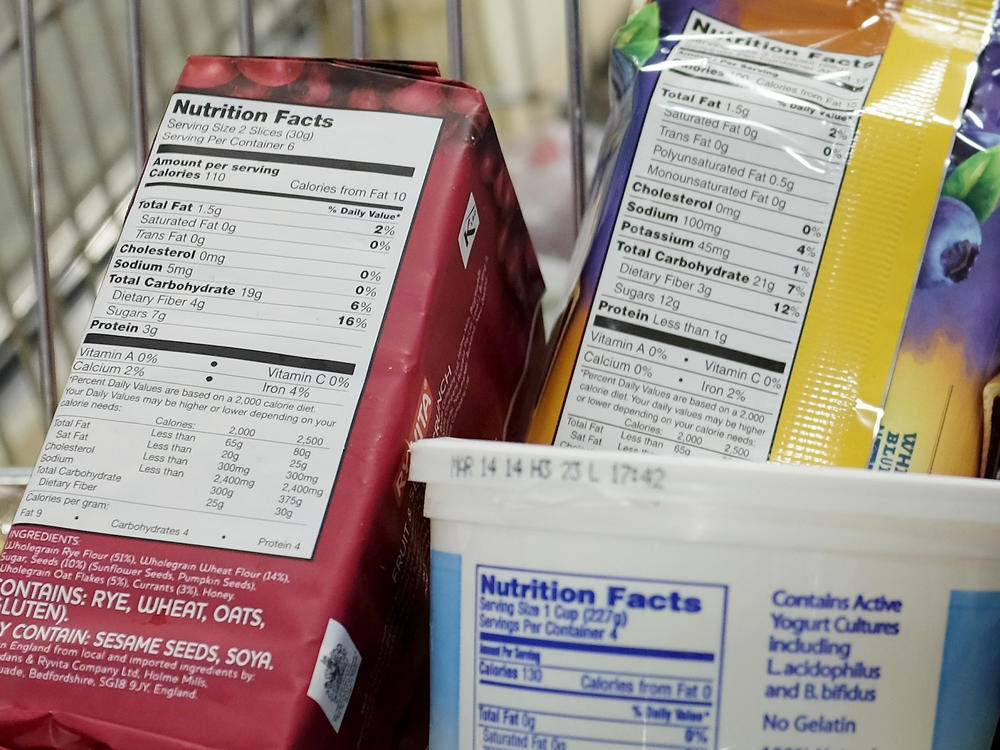Section Branding
Header Content
Next time you read a food nutrition label, pour one out for Burkey Belser
Primary Content
Carbs, protein, sodium and fat: if you're adept at scanning those nutrition facts on food and drinks packages, it's thanks in large part to Burkey Belser. But his work extended far beyond grocery aisles.
The graphic designer died at age 76 in Bethesda, Md., on Monday, reportedly from bladder cancer.
If you've noticed that the Drug Facts box on over-the-counter medicines seems to echo the food label, that's because Belser designed it, as well. He also created the yellow EnergyGuide box for home appliances.
Over his long and prolific career, Belser was celebrated for his ability to relay information in refreshingly accessible designs.
Belser's work is seen on billions of products
The nutrition fact box has been copied around the world. If it seems ubiquitous, Belser said, that should be taken as a good sign.
"When design works, it looks like it's always been there," he told member station WAMU in 2013.
"The New York Times called it the most printed and viewed piece of literature, piece of art, in the world," Belser once said of the label.
He famously did the work for free: when Congress approved the Nutrition Labeling and Education Act in 1990 with a mandate for a new nutrition label, it didn't appropriate money to pay for creating one.
The nutrition box hit store shelves in 1994
Creating the official food information panel was a complicated process, with input from business groups and health advocates, along with experts at the Food and Drug Administration.
Pie and bar charts were ruled out; so were other illustrations and colors, as the design team worked through 35 iterations. When the finished product came out, it was hailed as a success.
"I applaud the person who designed the Nutrition Facts label that's on every food package now being sold in the U.S.," the Italian designer Massimo Vignelli said in Print, the American Institute of Graphic Design's magazine, in 1996. "That is a masterpiece of information architecture, and quite a victory for social responsibility."
The label is also a reflection of Americans' shifting relationship with food: when some of the earliest dietary guidance came out in the U.S., it was aimed to help people get enough vitamins and minerals.
"The original label was mostly built, by the way, around a diet of scarcity," Belser told NPR in 2014. But as the country entered a new era of obesity and related conditions, he said, "people needed to learn to take care in their diet."
Those dynamics have continued to play out, in debates over the label's goals and effectiveness.
The food fact label got a makeover in 2014
"I often ask myself whether the label actually works," Belser said in 2013. "This label is so complex, I doubt people could tell you what a carbohydrate was, in general."
The FDA announced changes to the nutrition facts label in 2014, prompting Belser to tell Marketplace, "It's as if my dog died and I got a new puppy I liked, but not as much as old Spot."
Born in Columbia, S.C., and raised in Memphis, Tenn., Belser was an English major at Davidson College in North Carolina, where he also minored in studio art.
After graduating in 1969, he studied in France and traveled extensively before settling into graphic design in Washington, D.C. His firm specialized in marketing legal services — a nascent field when Belser's team took it up.
'Bad habits are worth tackling,' Belser said
Belser recently published a memoir called Design on the Run: How Not to Fail in the Business of Design, which he peppered with advice for young professionals.
"We will never improve the things we hate to do," reads one passage from the designer who is forever linked to Americans' nutritional goals.
Another passage continues that thought:
"Bad habits are worth tackling if they impede your success. Habits of mind like insecurity and fear in all their forms are the most debilitating. You can fix them if you hold them up to the light, trust me.
"In the end, you learn that the way you do anything is the way you do everything. Study this. Make friends with yourself."
As for his own success, Belser said that luck had probably played a big role. But, he added, "I'd say the willingness to work hard sets the stage to take advantage of whatever luck comes your way."
Belser is survived by his wife and business partner, Donna Greenfield, as well as two children, two grandchildren, a sister, and a half brother, according to The Washington Post.
Copyright 2023 NPR. To see more, visit https://www.npr.org.
Bottom Content

